
Rayagada district is a district in southern Odisha, a state in India, which became a separate district in October 1992. Its population consists mainly of tribes, primarily the Khonds and the Soras. In addition to Odia, Kui and Sora are spoken by the district's indigenous population. It was founded by Maharajah Biswanatha Deba Gajapati of the Surjyabansha dynasty of Jeypore.

The Pataleshwar Caves, also referred to as the Panchaleshvara temple or Bhamburde Pandav cave temple, are an 8th century rock-cut Hindu temple from the Rashtrakuta period located in Pune, Maharashtra, India. Dedicated to Shiva, it was a monumental monolithic excavation with a notable circular Nandi mandapa and a large pillared mandapa. It is a temple of three rock-cut cave sanctums, likely dedicated to Brahma-Shiva-Vishnu originally, but currently to Parvati-original Shiva-Ganesha. A garden now surrounds the site, new idols have been placed elsewhere in the complex. The interior of the caves have suffered damage from vandalism. Outside, the monument shows the effects of natural elements over the centuries.
Ujjain is an ancient city of central India, in the Malwa region of the Indian state of Madhya Pradesh, on the eastern bank of the Kshipra River.

Koneswaram Temple of Trincomalee or Thirukonamalai Konesar Temple – The Temple of the Thousand Pillars and Dakshina-Then Kailasam is a classical-medieval Hindu temple complex in Trincomalee, a Hindu religious pilgrimage centre in Eastern Province, Sri Lanka. The most sacred of the Pancha Ishwarams of Sri Lanka, it was built significantly during the ancient period on top of Konesar Malai, a promontory overlooking Trincomalee District, Gokarna bay and the Indian Ocean. The monument contains its main shrine to Shiva in the form Kona-Eiswara, shortened to Konesar.
Bissam Cuttack is a census town in the Rayagada district, within the state of Odisha, India. It is one of the identified Tourist Centres of Odisha.
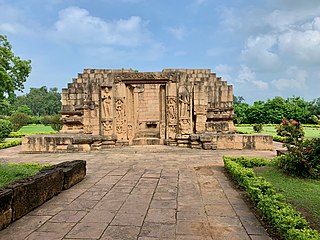
Malhar is a small town situated in Bilaspur district of Chhattisgarh, India. A historically important site that once was a major city and served as a capital in the 1st millennium, it has been referred to as Mallar, Mallari and Sarabhapur in inscriptions and Indian literature. In contemporary times, it is more village like with mounds and ruins of an ancient fort, two restored Shiva temples and a museum with the ruins of major group of Hindu, Jain and Buddhist temples. It has archaeological significance. It is about 30 kilometers southeast from Bilaspur in a rural terrain, connected with a feeder road from India's National Highway 49.

The Eastern Ganga dynasty also known as Purba Gangas, Rudhi Gangas or Prachya Gangas were a large medieval era Indian royal Hindu dynasty that reigned from Kalinga from as early as the 5th century to the mid 20th century. Eastern Gangas ruled much of the modern region of Odisha in three different phases by the passage of time, known as Early Eastern Gangas (493–1077), Imperial Eastern Gangas (1077–1436) and Khemundi Gangas (1436–1947). They are known as "Eastern Gangas" to distinguish them from the Western Gangas who ruled over Karnataka. The territory ruled by the dynasty consisted of the whole of the modern-day Indian state of Odisha, as well as major parts of north Andhra Pradesh, parts of Chhattisgarh and some southern districts of West Bengal. Odia language got official status in their regime following the evolution of the language from Odra Prakrit. The early rulers of the dynasty ruled from Dantapuram; the capital was later moved to Kalinganagara, and ultimately to Kataka and then to Paralakhemundi.

The Navalinga temple is a cluster of Hindu temples built in the 9th century, during the reign of King Amoghavarsha I or his son Krishna II of the Rashtrakuta Dynasty. The temple is located in the town of Kukkanur, 4 miles (6 km) north of Itagi in Koppal district and 25 miles (40 km) east of Gadag in Karnataka state, India. Built in the South Indian dravida style, each of the nine temples in the cluster has a linga, the universal symbol of Hindu God Shiva, and hence the name Navalinga.
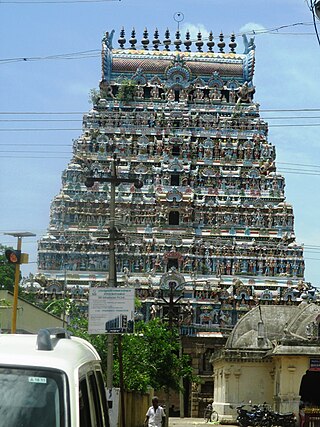
Mahalingeswaraswamy Temple, Thiruvidaimarudur is a Hindu temple dedicated to the deity Shiva, located in Tiruvidaimaruthur, a village in the South Indian state of Tamil Nadu. It is significant to the Hindu sect of Saivism as one of the seven major Shiva temples. Shiva is worshiped as Mahalingeswaraswamy, and is represented by the lingam, with his idol referred to as Jyothirmayalingam. His consort Mookambika is depicted as Devi Bruhatsundarakuchaambika or Bruhatsundarakuchaambigai amman. The lingam of the temple is believed to be the focal point for the seven consorts of Shiva. The presiding deity is revered in the 7th century Tamil Saiva canonical work, the Tevaram, written by Tamil poet saints known as the nayanars and classified as Paadal Petra Sthalam. The 9th century Saiva saint poet Manikkavacakar has sung praise about the temple in his works. Pattinattar, one of the revered saints visited this shrine many times.

The Kalleshvara temple is located in Aralaguppe, a village in the Tiptur taluk of Tumkur district, in the Indian state of Karnataka.
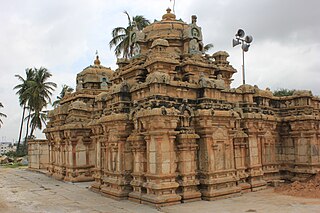
The Nageshvara temple complex is located in Begur, a small town within the Bangalore urban district of Karnataka state, India. From inscriptions, it is known that Begur was once called Veppur, and Kelele. Two shrines within the temple complex, the Nageshvara and Nageshvarasvami were commissioned during the rule of Western Ganga Dynasty Kings Nitimarga I and Ereyappa Nitimarga II. The remaining shrines are considered a later day legacy of the rule of the Chola Dynasty over the region. An Old Kannada inscription, dated c. 890, that describes a "Bengaluru war" was discovered in this temple complex by the epigraphist R. Narasimhachar. The inscription is recorded in "Epigraphia Carnatica". This is the earliest evidence of the existence of a place called Bengaluru.

Bhoganandiswara Temple and Arunachaleswara Temple are a twin Hindu temples complex located in Nandi village in Chikkaballapur district of Karnataka, India. Ornate, beautifully carved and dedicated to Shiva, they have been variously dated between the 9th- to 10th-century CE.
Padmapur is a village in the Rayagada district of Odisha, India. It is the most populated village and one of the identified tourist centers of the district. A hillock adjoins the village to its northern side to enhance the scenic beauty of the place. A 7th century inscription found here, in the Nilakantheswar Temple, indicates that the Jagamanda hill, located close by, once housed the monastery of the famous Buddhist logician-philosopher Dharmakirti.

Maa Markama Temple located at Bissam Cuttack village of Rayagada district is a place of tourist interest. It is the only shrine of Devi Maa Markama and Maa karkama in the Indian state of Odisha. The temple of Maa Karkama is situated next to the temple of Maa Markama. The legend says that the Devi is being worshiped for centuries. However, the temple was constructed in the recent past. A junior college and a university college in Bissam Cuttack are named after Maa Markama. The temple is one of the places of tourist attractions in Rayagada district. Dussehra and chaitra Paraba are celebrated every year at the temple. The nearest rail head is Chatikona, which is 7 km from Bissam Cuttack.

Chatikona is a small village of Rayagada district in the state of Odisha, India. It is one of the identified Tourist Centres of Odisha.
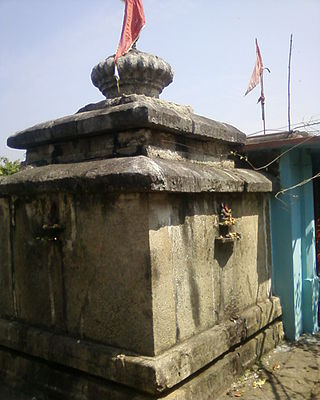
Nilakantheswar Temple at Padmapur, standing on the Jagamanda hills makes the village well known for the Buddhist temple. The temple is built on only seven rocks. There are also three other shiva temples, i.e. Pudukeswar, Dhabaleswar, and Mallikeswar, on the hillock. This 7th-century-old buddhist temple makes Padmapur a tourist center of Rayagada district. The temple is very often referred as shrine of Manikeswar Siva. Recently a small cemented front hall has been added to the original structure.

The Culture of Telangana in India has a cultural history of about 5,000 years. The region emerged as the foremost centre of culture in Indian subcontinent during the rule of Kakatiyas, the Qutb Shahis and Asaf Jahi dynasties—. The rulers patronage and interest for culinery, arts and culture transformed Telangana into a multi-cultural region where two different cultures coexist together, thus making Telangana the representative of the Deccan Plateau and its heritage with Warangal and Hyderabad being its epicenter. Hyderabadi cuisine and Kakatiya architecture both from Telangana, are on the list of UNESCO creative city of gastronomy and UNESCO World Heritage Site. The regions major cultural events celebrated are "Kakatiya Festival" and Deccan Festival along with religious festivals Bonalu, Bathukamma, Dasara, Ugadi, Sankranthi, Milad un Nabi and Ramadan.
Minajhola is located near Gudari in the Rayagada district, in the Indian state of Odisha. It is famous for the Shiva temple, one of the tourist attractions of the district. The main place of attraction is a shiva temple at the confluence of three rivers i.e. Vamsadhara, Chauladhua & Phalaphalia here. Situated at the heart of the dense forest, It is one of the identified Tourist Centres of odisha. Minajhola is famous for its Shiva temple, People from far and near visit the shrine during the festival of Shivaratri
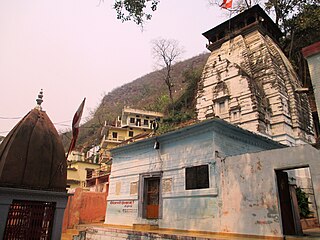
Raghunathji Temple in Devprayag, a pilgrimage town in Tehri Garhwal district in Himalayas in the North Indian state of Uttarakhand, is dedicated to Vishnu. It is located 73 km from Rishikesh on the Rishikesh–Badrinath highway. Constructed in the Deula style, the temple is glorified in the Nalayira Divya Prabandham, the early medieval Tamil canon of the Alvar saints from the 6th–9th centuries CE. It is one of the 108 Divyadesam dedicated to Vishnu, who is worshipped as Raghunathji (Rama) and his consort Lakshmi as Sita.
















